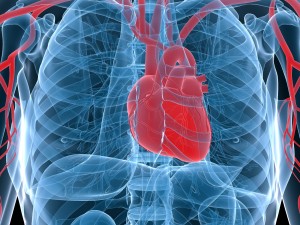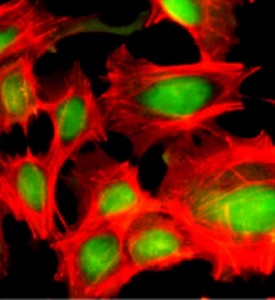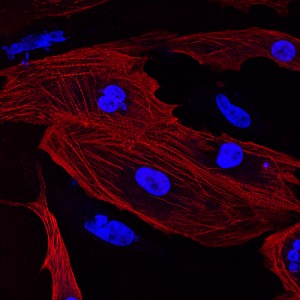New Horizons in Heart Attack Therapy
by Tailong Xu
Close to a million Americans suffer from Cardial Infarction, or what we know as Heart Attacks, each year with a large percent of fatalities resulting from a failure to regenerate the damaged cardiomyocytes, the muscle cells of the heart. These are the cells that do the heavy work pumping blood through your heart. If they could be treated, the survival rate for heart attack victims would jump significantly.
In the cells of your body, there are certain proteins called transcription factors and molecules similar to DNA called microRNA that bind to your DNA and regulate the control of genetic information. They work together to determine which genes should be turned off and which need to be turned on. Depending on the genes that are turned on, the cell can become any type of cell in any part of the body.
Young-Jae Nam at UT Southwestern investigates some studies in mice and rats that provides some insight about possibly regenerating cardiac muscle cells in humans.
The studies report that a combination of transcription factors and micro RNAs (miRNA) is able to reprogram immature undifferentiated cells into the muscle cells your heart needs to function. Essentially, all organs in your body contain these immature cells that are not yet differentiated, or programmed to do a certain function. These cells are like robots that have not yet been programmed with instructions yet. Your skin, for example, loses an insurmountable amount of cells each day. It is able to constantly regenerate cells at a remarkable due to single transcription factors that turn undifferentiated cells into skin cells to replace the ones that are lost. The cells in your heart have no way of regenerating even with these single transcription factors. Keep in mind that these studies are done in mice.
This research still provides a possibility for programming these cells into the heart cells similar to those that become damaged during Heart Attacks that normally cannot be regenerated or repaired in humans.
Masaki Ieda shows that a set of three transcription factors referred to as GMT can activate cardiac gene expression in mouse tissue cells about 15% of the time. With the addition of micro RNA, this success rate is increased. What this means is that there is already a way to convert cells to heart muscle cells in mice.
Initial attempts to conduct these experiments on human cells found many difficulties. Researchers are guessing that there are at least five different transcription factors that need to be used in contrast to those necessary in mice. The process in human tissue cells is also slower and yields less heart muscle cells due simply to the sheer complex nature of our cells compared to those of mice.
The cells generated through successful reprogramming in mice do have dramatic functional improvement, suggesting that reprogramming relies on mechanisms beyond simply activating and deactivating certain genes. This opens many new doors to therapies beyond the realm of heart attacks. If this process could be efficiently developed in humans, the new generated cells could potentially be more powerful that the ones you are born with.
While this research is still in the preliminary stages, there is much potential for it to become a viable treatment for victims of heart attacks. Who knows what amazing new fields can come from this in the future.
Source:
Nam, Y., Song, K., & Olson, E. N. (2013). Heart repair by cardiac reprogramming.Nature Medicine, 19(4), 413-415. doi:10.1038/nm.3147
Further Reading:


